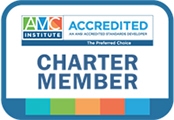Associations are looking to the future and considering where they fit in regarding their relevance. Their relevance is, of course, largely determined by how well they serve their members and the value proposition they offer. As association leaders reconsider everything from programs to membership models, diversity and inclusion programs, and more, one key topic often up for discussion is membership dues. When benefits and programs change, dues must reflect that. Similarly, as staffing changes to accommodate additions, dues may need to also reflect the increase in services. What are the key considerations for associations reevaluating their pricing and membership dues structure?

Streamlining Memberships
In the wake of recent industry changes, associations are doubling down on strategy– revisiting their membership structures entirely in order to streamline and simplify. Inherent in that process comes a restructuring of dues.
For years, one AH client partner averaged six different membership types–-only to find that this variation led to some confusion for members. Some would ask why they couldn’t change to another membership that was cheaper but also gave them the same benefits as the more expensive option.
In light of these questions, this client partner began asking themselves how they could simplify, and ultimately decided to shift to just two membership types: “member” and “student member”. They communicated this new, clearer membership structure and its respective tiers to both existing and prospective members and were greeted by immensely positive results.
Listening and responding to member feedback by simplifying membership and related dues structures helps ensure an association’s long-term viability. Since introducing the new membership and dues structure, both new and renewing members of the above-mentioned client partner have more clarity on their member type and benefits. Moreover, this client partner reports that retention is now easier to manage and track.
Keeping Pace with Change
A dues restructure may be driven by either internal or external factors. Whatever drives it, it’s critical that it be supported with data, and come at the right time for both the organization and members.
Recently, another AH client partner proposed a dues increase that was ultimately voted down by its Board of Directors. However, the organization’s leadership understood that it needed to assess the association’s revenue channels. They formed a finance committee to evaluate all of its pricing structures on an annual basis, including meeting pricing, webinars, dues, and other activities that supported the association.
The organization ultimately voted for incremental increases to its dues over the course of four consecutive years—enough to support the association’s growing activities but not enough to lose members. The finance committee continues to perform an annual review of expense and revenue in order to make an informed recommendation to the board for consideration.
Incremental increases can be an effective tactic for organizations that don’t want to alienate members with a large, one-time leap in dues. However, it must be said that any dues increase warrants careful consideration.
Aligning Dues and Benefits
Today, membership dollars are more heavily scrutinized than ever. Before making a dues adjustment, consider what can be done to offset the increase with other benefits and how those benefits are positioned. “We have to be nimble and pivot and think about what members are facing and what tools we can give them to help,” said an AH representative. “If we’re not doing all those things, they're not going pay the dues if they increase.”
While revisiting dues and benefits alignment often means a dues increase, it may lead to a decrease for some member types. In the first client partner’s situation, many full members experienced a dues decrease from $170 to $135 a year, while other members saw their benefits increase, giving all members the same benefits.
Associations may also find that restructuring pricing and access to benefits can help offset or justify a change in membership dues. Another client partner made their continuing education courses free for all members as part of their restructuring.
Other Approaches to Membership Fees
If changing dues pricing is not in the cards for an association, newer approaches to membership structures can help engage reluctant members at a price point and fee structure that is proving to resonate better with prospects.
Tiered Memberships: Tiered membership allows members to select their level of access, paying higher membership dues for more access. As members advance in their career, they may opt to increase their level, but if they need to scale back, the lower levels provide options without meaning a lapsed member. While there’s a risk that some members may leave higher tiers for the lower ones, attaching key benefits like discounts, continuing education courses, and exclusive content often helps to keep members in the higher tier.
Membership Installment Payments: The flexibility of making monthly, quarterly, and semi-annual payments can draw in more members, especially for associations with corporate members who may find it difficult to make a large lump-sum membership payment.
The Bottom Line
If your financials hint that a change in dues may be in your future, or if your members are asking for simplicity and streamlining that may lead to a dues restructure, consider where and how your benefits will support that change. Explore whether innovative models, such as tiered memberships or installment payments, would be a welcome change along with a restructure. Change is necessary and, if done right, can help ensure that your association is able to continue serving members for years to come.




